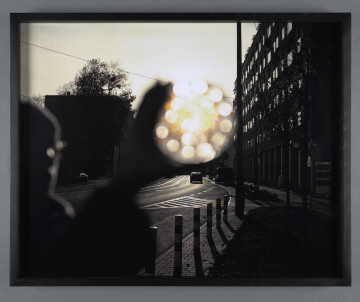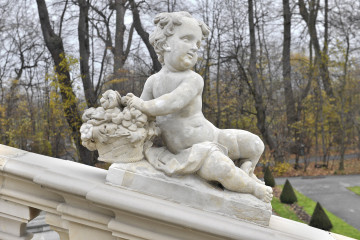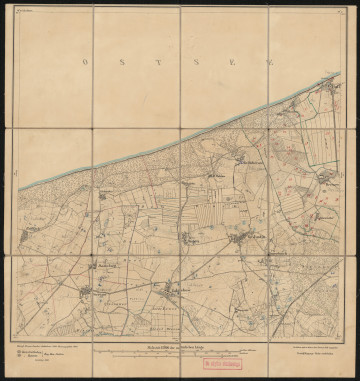
Photograph
2019
Museum of the history of Polish Jews
Artur Żmijewski (b. 1966 in Warsaw) – visual artist, expressing himself primarily through multimedia and video. One of the leading representatives of critical art in Poland. Although he graduated in sculpture, he chose photography and film as his creative method, claiming that: “Today I don’t sculpt – I make films – the world is too complicated to be sculpted. In fact, it’s enough to do some photographs to see that sculpture fails to keep up the pace. Photography and film eradicated my faith in the possibilities of sculpture, they have ridiculed it.” Artur Żmijewski represented Poland at the 51st Venice Biennale (2005), he received the prestigious Ordway Prize awarded by Creative Link for the Arts and the New Museum in New York (2010) and the Jerzy Stajuda Prize for Art Criticism (2013). He participated in a number of group and solo exhibitions around the world, his works are included in renowned institutional collections.
In his works, he touches upon themes related to very different areas of the human condition and existence, in particular those considered difficult and often rejected as taboos. His works are very often controversial, exploring the boundaries of what an artist is allowed to do, provoking the need for polemics and response to the presented theme. One of the directions of the artist’s interest are historical events, including traumatic topics related to the Holocaust and their echoes, as well as the difficult Polish–Jewish relations. His creations dealing with this topic include video works: The Game of Tag (1999), the so-called Israeli Triptych (Itzik, Lisa, Our Songbook, 2003), 80064 (2004) or A Pole in the Wardrobe (2006).
In 2019–2020, Artur Żmijewski collaborated with the POLIN Museum to create the temporary exhibition “Here is Muranów”, dedicated to the history of this Warsaw district, which for centuries was home to the largest Jewish community in Europe. The artist took his works in cooperation with Zofia Waślicka-Żmijewska, a researcher into the memory of the Holocaust, and with the help and consultation of Prof. Jacek Leociak, specialist of the Polish Center for Holocaust Research, initiator and co-author of the “Here is Muranów” exhibition.
This collection presents works that weren’t show at the exhibition. There is a series of 26 black and white digital photographs taken with a wide-angle lens. Each of the photograph show a snapshot of contemporary-looking places that, during the Second World War, were located within the boundaries of the Warsaw Ghetto – a place where thousands of Polish Jews lived and died. Old, survived or rebuilt architecture is shown next to modern buildings, street layout, tram traction and traffic. Frames with curves characteristic for this technique add a reporter’s effect and also evoke the association of looking at the reality ‘through the viewfinder’.
A film “Where is the Nalewki Street?” shot from a drone was also made as the part of this project. The narrative, moving slowly but steadily, shows a historical course of the Nalewski Street. Before the Second World War, Nalewki Street (ul. Nalewki) was one of the city’s main routes, the main artery of the Jewish Northern District, also known as the Nalewki-Muranów District. The street development was destroyed during the war and never rebuilt. The street has survived only in a short section as the current Stare Nalewki Street (ul. Stare Nalewki), which until 2019 was the Bohaterów Getta Street (ul. Bohaterów Getta). The film, shot during the Covid-19 virus pandemic, is additionally a record of an empty city, deprived of normal urban life due to the necessary isolation of its inhabitants and which, although independent from the author’s intention, may bring to mind the extermination of the Jewish inhabitants of Muranów.
Małgorzata Bogdańska-Krzyżanek
Znaleziono 47 obiektów

Museum of King Jan III's Palace at Wilanów

1889 — 1890
National Museum in Szczecin

9600 p.n.e. — 4100 p.n.e.
National Museum in Szczecin
DISCOVER this TOPIC
Castle Museum in Łańcut
DISCOVER this PATH
Educational path